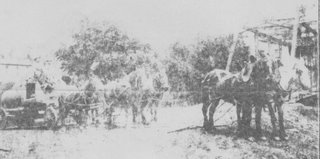 The only photo I could find of Orlando horse teams is this very poor one.
The only photo I could find of Orlando horse teams is this very poor one. 1. The Weston Democrat Wed, Nov 2, 1977. Orlando: Cinderella City writen by Mary Mazza.
In the heart of the West Virginia hills, at the edge of the Little Kanawha River Basin, is Oil Creek with its several tributaries. It was first settled at the beginning of the 1800s. At the confluence of Clover Fork & Oil Creek the town of Orlando developed in the late 1800s and withered in the mid 1900s. For two hundred years a small community has loved, worked, fought dreamed and worshiped here and raised new generations to do the same. Here are some of the stories of that community.
 The only photo I could find of Orlando horse teams is this very poor one.
The only photo I could find of Orlando horse teams is this very poor one. 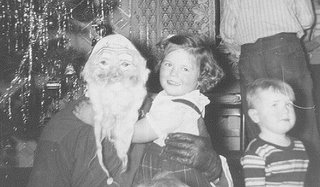
As far as I know the parlor was only used officially for two things. One was Christmas Eve. The tree was magically already decorated when the door was opened on Chrismas Eve for us kids to rush in. Above is my cousin Joe Burgett and me with the world's scariest Santa. I never found out who was behind the other-worldly mask. It scared the Dickens (holiday reference intended) out of me the first time I saw it. Apparently I got over the initial shock.
It was also used for Aunt Virginia's funeral in the 1950s. Her open casket was in the parlor, just as we do in a funeral home today and people came to pay their respects. The day she was buried the lid was closed with a prayer and her body was taken to the Methodist Church where it was lovingly carried to the front. The lid was opened again and we said our last goodbye. After the service the coffin was driven up the steep hill to Orlando Cemetery, where she rests with her parents and their parents, and their parents.
Fifteen years later Grandpa was buried from a funeral home in Weston and buried in Orland Cemetery.
Peter Shields was Phoebe (Conrad) Skinner's grandfather: her mother's father. See the entry "Orlando's Grandmother, Phoebe Conrad" and for more on Peter Shields' adventures see http://duskcamp.itgo.com/Shields.htm
We know Peter Shields was christened on Jan 26, 1756 in Lanchester, Durham, England. His parents had lived in Ireland, maybe they were Irish.
Peter came to America as a British soldier during the American Revolution and served under General Burgoyne. When Burgoyne surrendered at Saratoga Peter and his fellow English and Hessian soldiers were marched to Cambridge, Massachusits and then to a POW camp in Charlottesville, Virginia.
Many of the Hessians deserted as they passed through the German communities in Pennsylvania. The English prisoners of war also wondered what they were fighting for, and chose to join the colonies and fight for freedom. Peter was one of those. He deserted the British and served in the Continental Army and witnessed the surrender of General Cornwallis at Yorktown, Va. in 1781.
In return for his military service, Peter was granted 70 acres of land in Hardy County Va. April 2, 1783. He married Elizabeth Singleton in Hardy County about 1783 on North Mill Creek
and they lived there until about 1807 when they moved to Salt Lick in what is now Braxton County. 
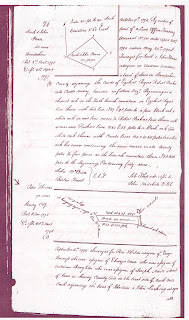
All the Conrads and Skinners of Orlando, among many others, descend through Peter Shields.
Material in this entry has been taken fron the information provided by Howard Bee and Darryll Groves and Paul Frazier in their family trees published at Rootsweb.com and Ancestry.com.
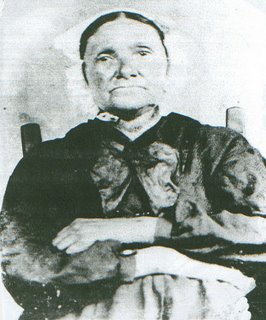 Phoebe (Conrad) Skinner is, as female ancestors tend to be, hard to know. Here are a few things we can pull from the lives of the men around her.
Phoebe (Conrad) Skinner is, as female ancestors tend to be, hard to know. Here are a few things we can pull from the lives of the men around her.  I'm not including the Depression because Orlando had already hit its own depression with the leaving of the railroads but more importantly because I suspect this isolated community was more capable of self-sufficiency than most. It wasn't so far from a frontier community that it couldn't revert back to that hard but sustainable life. I could be wrong. I'd love to hear what others think. However, World War II following the loss of the railroad drained the life right out of this 150 year old community. Certainly there was a war to be fought and won. Lots of Orlando boys marched off to keep the world free. Our first daughter marched off in this war. Juanita Stutler, daughter of Oras and Edith (Skinner) Stutler. 'Neet fibbed about her age and did nuring work until the Army discovered how young she was. The photo above is of her with her future husband, Lee Burgett.
I'm not including the Depression because Orlando had already hit its own depression with the leaving of the railroads but more importantly because I suspect this isolated community was more capable of self-sufficiency than most. It wasn't so far from a frontier community that it couldn't revert back to that hard but sustainable life. I could be wrong. I'd love to hear what others think. However, World War II following the loss of the railroad drained the life right out of this 150 year old community. Certainly there was a war to be fought and won. Lots of Orlando boys marched off to keep the world free. Our first daughter marched off in this war. Juanita Stutler, daughter of Oras and Edith (Skinner) Stutler. 'Neet fibbed about her age and did nuring work until the Army discovered how young she was. The photo above is of her with her future husband, Lee Burgett. 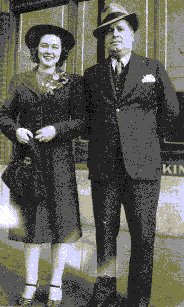



 d him, but he wasn’t alone. Pictured here are a couple other paper brands: Bugler and Job.
d him, but he wasn’t alone. Pictured here are a couple other paper brands: Bugler and Job.
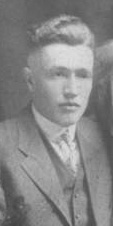

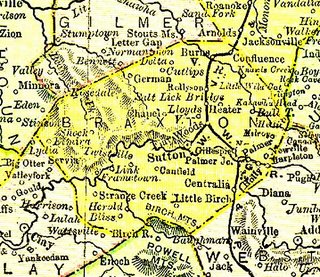 County indicates the town of Confluence right where it should be, in the upper right quater of the map. The name was changed to Orlando about 1803. because there was a Confluence, Pennsylvania and the two were getting confused.
County indicates the town of Confluence right where it should be, in the upper right quater of the map. The name was changed to Orlando about 1803. because there was a Confluence, Pennsylvania and the two were getting confused.Joy Stalnaker tells us that when the change was being considered, "Skinnerville" was a contender. Somewhere I've seen "Orlando Junction," which would have been a cool name.
Still, who or what was "Orlando" that the town was given this name?
1. Orlando:Cinderella City... . Weston Democrat Wed, Nov 2, 1977.

